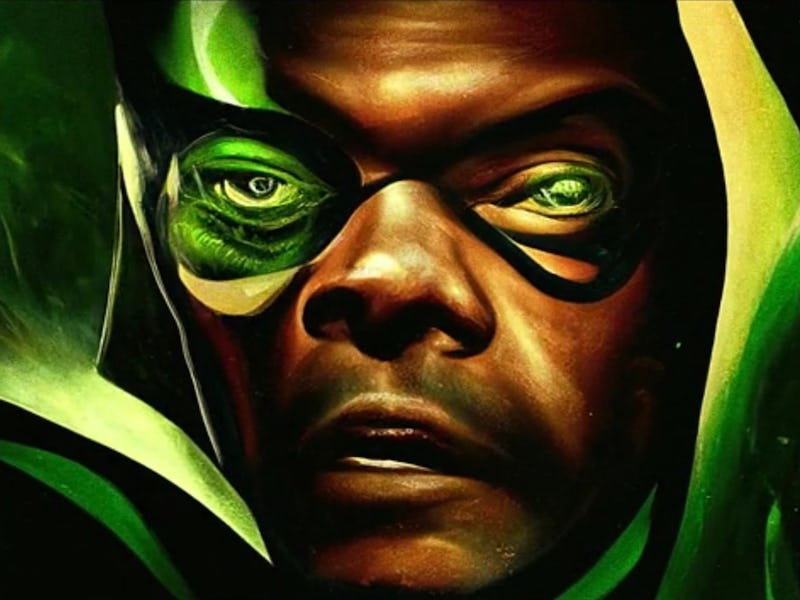“AI is a Tool.” The Problem With Secret Invasion is More Complicated Than You Think
The Marvel series caused a controversy with opening titles using AI-generated art, but it’s more than an issue of morality.

The Marvel Cinematic Universe owes its success to comic book writers and artists, the people who crafted and created the characters behind one of the biggest movie franchises ever.
But Marvel’s loyalty to its roots was called into question with the premiere of Secret Invasion, the latest entry in the MCU. The title sequence for the series, depicting shifty, painterly images of Skrulls, was immediately called into question for potentially being generated using artificial intelligence. Polygon would go on to confirm with series director Ali Selim that the intro was, in fact, achieved with AI.
“When we reached out to the AI vendors, that was part of it — it just came right out of the shape-shifting, Skrull world identity, you know? Who did this? Who is this?” Selim said. But even though it was a purposeful choice to reflect the inhuman espionage elements of the series, backlash from both artists and fans was quick and severe. One of the most prominent criticisms of AI is that it scrapes images of existing art, leading to questions of the ethics of using artists’ work without their permission or without compensating them.
One of the leading experts on title design is Lola Landekic, Editor in Chief of Art of the Title, a resource and archive dedicated to title sequence design. She’s also a title designer herself. To Landekic, the Secret Invasion intro isn’t the black-and-white issue many fans may think. “It's a fascinating intro. There's parts of it that are extremely beautiful,” Landekic tells Inverse.
She compares this AI-generated sequence to the titles for recent HBO Max sci-fi series Raised by Wolves and the 2010 miniseries The Pillars of the Earth, which both featured “shape-shifting” imagery in a low-frame rate painterly style.
“It felt like two applications, two creative solutions for a very similar idea,” Landekic says. “Aesthetically they end up looking quite similar, except one we know did not involve the human team we might expect.”
As far as we know, Secret Invasion is Marvel’s first AI-generated project, though some worry it’s a first step to replacing artists altogether. But even this title sequence wasn’t the result of plugging a few numbers into a program and collecting the resulting images. Method Design, the studio behind the intro sequence, said in a statement to The Hollywood Reporter that “while the AI component provided optimal results, AI is just one tool among the array of toolsets our artists used. No artists’ jobs were replaced by incorporating these new tools; instead, they complemented and assisted our creative teams.”
Landekic emphasizes that AI-generated designs aren’t the job killer people may think. Design elements like this are made with AI, not by AI.
“Where the problems start to arise is where people forget that AI is a tool and they look at it as a end-all be-all source for creative solutions,” she says.
Landekic draws comparisons between Secret Invasion’s title sequence and Raised By Wolves’ titles.
But beyond the ethics of whether or not AI is used, there’s a deeper conversation in how AI is used. Landekic highlights the machine learning used in Spider-Man: Into the Spider-Verse. For that movie, animators created a library of facial features and then machine learning was used to guess where those elements would go in a shot, with an animator on hand to correct any mistakes. This isn’t as frowned upon as other uses of AI-generated imagery because it was trained on original content. With other projects, including Secret Invasion, it’s unclear whether the origin of the art comes from an actual human or from analyzing millions of uncredited images scraped from the internet.
In its statement, Method said its “team of designers skillfully leveraged the power of both existing and custom AI technologies to apply the otherworldly and alien look.” The statement doesn’t address whether the AI used to create Secret Invasion’s intro was trained on uncredited art. (Inverse requested further clarification from Method Studios but did not receive a reply.)
If AI truly isn’t replacing any artists’ jobs for now and the images to train the tech are all made in-house, then the debate around this may not be as simple as what may be right and wrong, but what is artistically suitable (and comfortable) for viewers.
“There's a point A to point B link that happens when you experience a piece of art where you try to empathize or connect on a mental level with the origin,” Landekic says. “When you know that this thing you're experiencing was not generated by a human, it interrupts that process, and I'm not sure that it can create the same connection.”